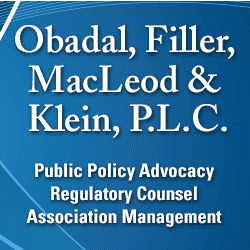MAG Modifications: What’s the Change?
The Federal Aviation Administration (FAA) and European Aviation Safety Agency (EASA) have issued a revision to Maintenance Annex Guidance (MAG) provisions.
The MAG, originally released on May 3, 2011, contains implementation procedures for the U.S./EU Aviation Safety Agreement; it contains three sections relevant to 1) regulatory authorities 2) U.S.-based repair stations and 3) EU-based approved maintenance organizations. Change 1 was dated Nov. 22, 2011 and signed by the FAA on Jan. 10, 2012.
Most notably, the revised MAG requires the FAA to include a copy of any letter of investigation (LOI), and LOI response, related to an EASA Form 9 “non-recommendation.” The MAG states that a non-recommendation does not necessarily lead to certificate action by EASA.
Apart from general grammatical and formalistic modifications, the latest revision also:
- Added a requirement that the FAA send an annual report to the Joint Maintenance Coordination Board summarizing “systematic issues” of sampling inspection team visits.
- Added an EASA definition of “accountable manager”.
- Clarified that “Level 1 findings” are required to issue a “non-recommendation” (previously required “one or more significant finding/discrepancy”).
- Reiterated throughout that the EASA supplement must be “customized” to the repair station.
- Removed the requirement that EASA send a renewal invoice to certificate holders 90 days before their EASA certificate expiration. The applicant is now responsible for sending its renewal package to its flight standards district office at least 90 days prior to its EASA certificate expiration.
- Clarified that EASA advance notification for a “one-time special circumstance” working away from a fixed location is not required for repair stations having D100 authorization.
- Clarified that all renewal packages must include a new supplement, a Form 9 and Form 16. All EASA approval holders must have a new supplement in place by Dec. 31, 2012.
- Modified sample EASA supplement text—
- Clarified that if not the chief executive officer, the accountable manager must “have direct access to the chief executive officer and have sufficiency of maintenance funding allocation.”
- Clarified that FAA Form 8130-3 dual release instructions should specify that “newly overhauled” be signed off in block 20 against the block 19 maintenance release.
- Added a paragraph noting that the clause “except as otherwise specified” is intended for use on an 8130 dual release form in two instances (1) The case where all required maintenance was not carried out and (2) where the particular maintenance requirement was only EASA-approved.
- Added a table summarizing what maintenance release form should be used depending on the location of the repair station and whether it is for new or used components.
- Added FAA 8130-3/EASA Form 1 dual release sample instructions.
- Added sample audit program.
A document outlining the specific revisions in their entirety is available here.
~~~ posted 3/5/12 ~~~







